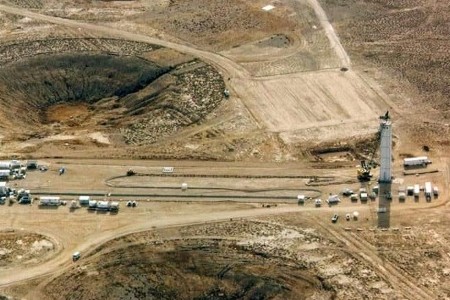June 4, 2020 – If reports from the Washington Post and the Guardian are accurate, then ongoing discussions are underway in the Trump White House to explode a nuclear bomb before the November election. Described as “completely nuts” by the Federation of American Scientists, nevertheless, this is the kind of news that seems apt for this current U.S. administration.
Nuclear tests were common throughout the Cold War. In 1991, the Soviet Union declared a moratorium on nuclear tests shortly followed by the United States the next year. That led to the Nuclear Test Ban Treaty which was signed but never ratified by America yet adhered to until now. With the Trump administration announcing that it is pulling out of the Open Skies agreement designed to reduce war from accidentally breaking out by allowing reconnaissance flights over each others’ territories by the 34 member countries who signed it, there is concern that the next treaty to be trashed will be the test ban.
Is it important to test nuclear weapons today? Not so much anymore because under the Stockpile Stewardship program, the weapons are regularly inspected, and sophisticated simulations replace physical testing. In an article published by the Bulletin of the Atomic Scientists, Robert Rosner, Professor of Physics at the University of Chicago and the Bulletin’s Chair for Science and Security states: “Do we actually need to test? The answer is—with the current weapon systems that we have—I think the answer is clearly no, we don’t need to test. I think there’s a very high consensus on that.”
Trump has already withdrawn from a treaty with Russia to limit intermediate-range missiles, accusing the other side of numerous violations which is likely true. There seems little justification to abandon Open Skies, but the current administration appears to no longer want to support it. Does that mean the Test Ban treaty will soon follow?
If it does and the United States resumes nuclear bomb tests in Nevada it is seen by those at the forefront of weapons development as being nothing more than a political stunt. Rosner states, “there is a really fantastic tactical and strategic value for the United States in maintaining a testing ban.” Besides the Russians being given the impetus to resume their testing, there are numerous other nuclear and nuclear wannabe countries that will see this as an open invitation to start doing the same, unleashing a new technological arms race to make these weapons even more sophisticated and destructive.
In this election year, however, demonstrating power seems to be the new Trump mantra in the absence of his administration’s ability to defeat COVID-19, and address the problem of police brutality towards U.S. people of colour. The need to “dominate the streets” may translate into other forms of overbearing behaviour with indeterminate consequences.
The people of Nevada may also have a say should the President resume testing in their state with consequences for the November vote. The Test Ban Treaty had no end date. It included both remote and onsite monitoring of countries with nuclear weapons programs. Withdrawing from it was described as limited to “extraordinary events” of “supreme national interest” for the original 44 signatory countries that signed on. The only known countries with nuclear weapons that have not signed are North Korea, India, and Pakistan. Five of the original 44 have signed but not ratified. They include China, Egypt, Iran, Israel, and the United States. Meanwhile, including the original 44, 184 nations have signed and 168 states ratified the treaty to date.
This year the U.S. State Department claimed without providing evidence that Russia was conducting illegal nuclear tests in violation of the Test Ban Treaty. This could become the pretext for Trump to withdraw from the Test Ban Treaty. Resuming testing could bring us perilously closer to midnight on the Doomsday Clock, let alone it may make Nevada voters in November really mad, particularly after the state’s citizens fought to end the Yucca Mountain site project which would be used to store the nuclear waste from power plants.









